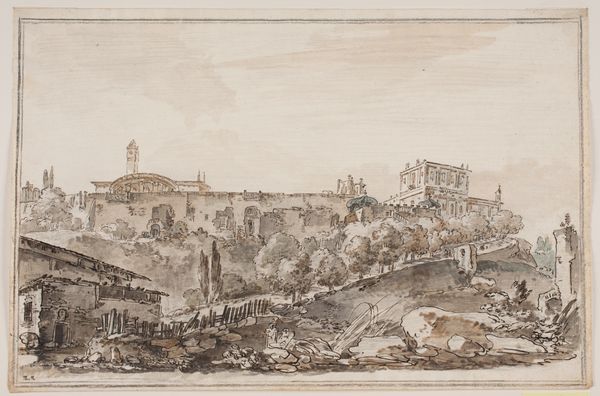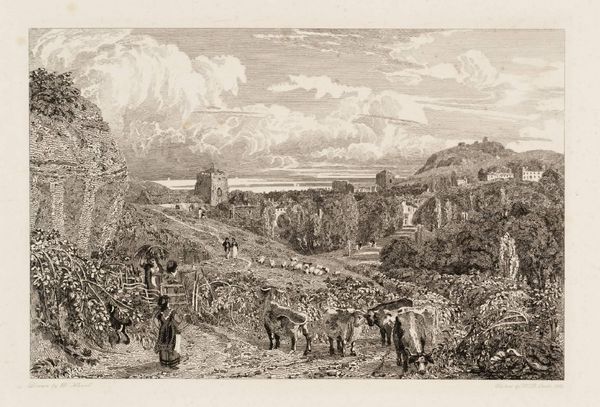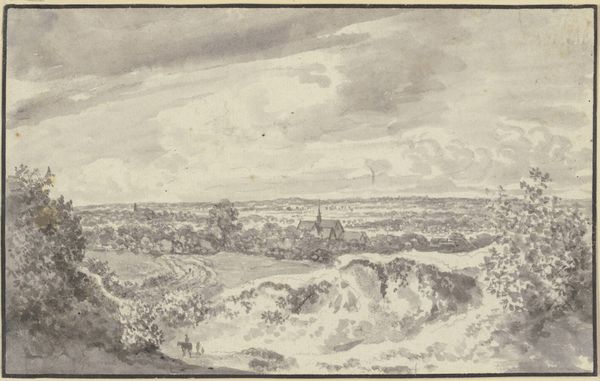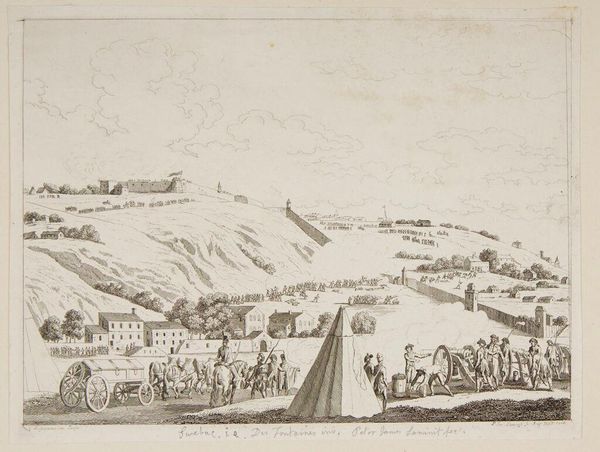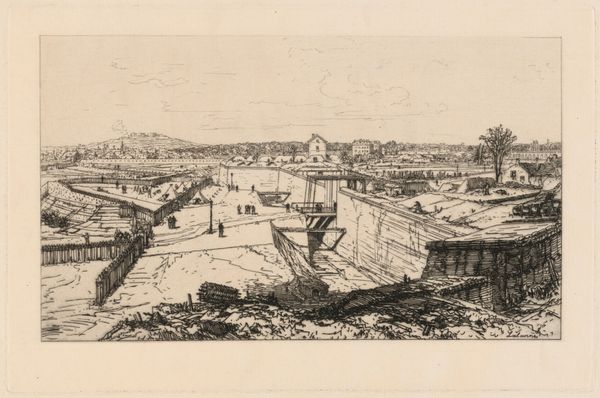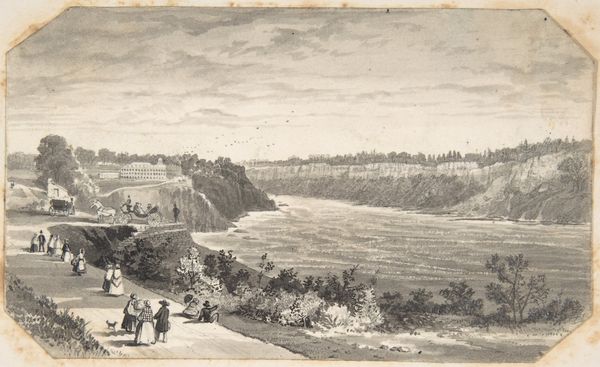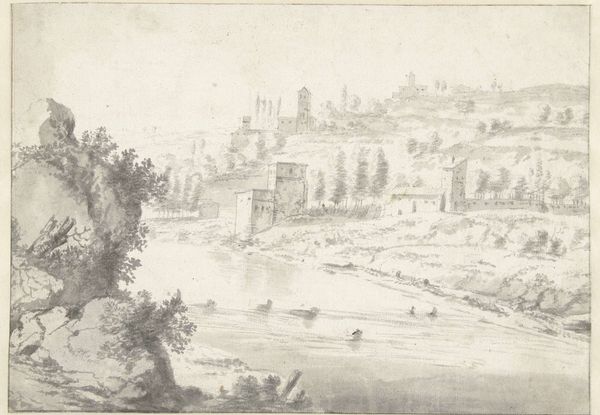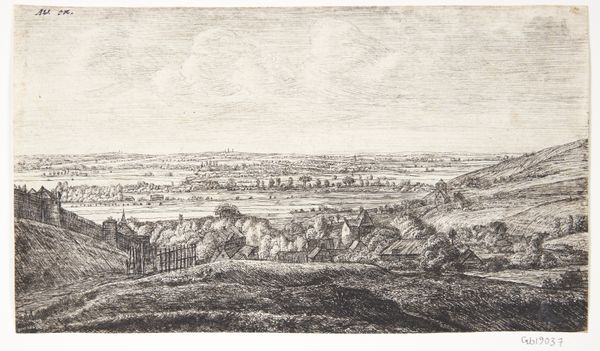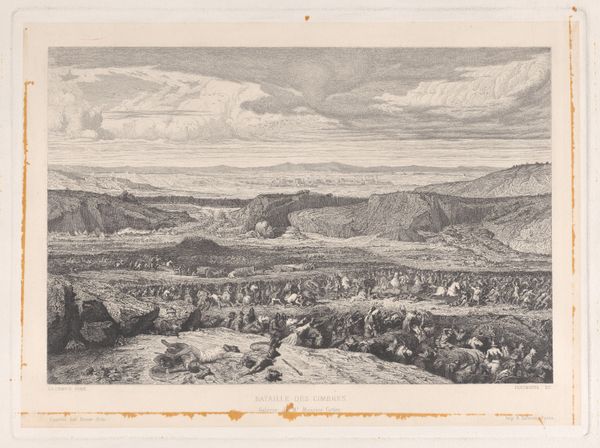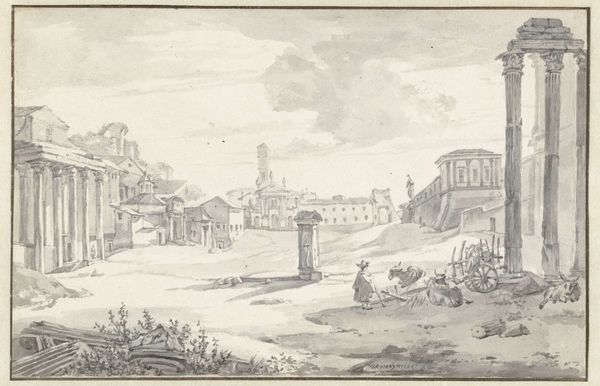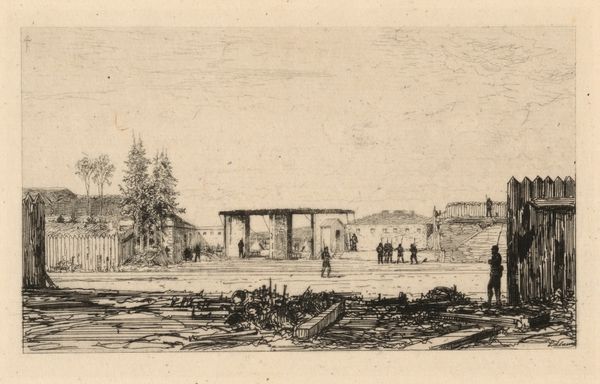
drawing, pencil
#
drawing
#
landscape
#
romanticism
#
pencil
Dimensions: 349 mm (height) x 532 mm (width) (bladmaal)
Curator: Oh, this pencil drawing feels like a whisper from another time. There’s such stillness, a hush about the landscape... melancholy, almost. Editor: That stillness might belie the historical significance embedded in this work, J.C. Dahl's "Prospekt af Kongsberg." Dating from 1788 to 1857, it captures the industrial heart of Norway at the Kongsberg Silver Mines, then a site of immense social and economic complexity. Curator: You're right, there's a layered narrative happening here. The delicate lines of the town nestle below those soft, almost yearning hills. And the light! Even rendered simply with pencil, you sense a Northern light bathing the scene. The tiny figures, look at them gathered! Are they tourists? Workers? Ghostly presences? Editor: I interpret them as representatives of the labor force, perhaps awaiting instruction. The silver mines demanded a significant workforce, drawing in people from diverse backgrounds, often under harsh conditions. Dahl, though, romanticizes; there is no sense of the political struggle inherent in such an exploitative labor arrangement. Curator: Yes, "romanticizes" is a key word. The way he frames the scene, it almost softens the stark reality of resource extraction, the mark the industrial leaves on nature… Perhaps this softening comes from that tension always buzzing just under the surface: finding beauty even within exploitation, seeking reconciliation. It makes me think about our own uneasy dance today. Editor: Exactly. By understanding the historical context, we begin to unravel the ways art can both reveal and obscure power dynamics, privilege, even systemic injustice. For whom, then, does this vista primarily perform? The Norwegian King, the mine operators, the investors abroad...? Curator: I can't help but think of light. His use of the medium and this delicate interplay of the shadow within it reminds me of poetry. You can't *quite* hold on to a solid truth. A wisp of feeling is gone just as soon as it is noticed. Perhaps like this place? This drawing invites reflection – a contemplation of echoes. Editor: And from these echoes, we find whispers. They beckon us toward greater examination of the world, yesterday and today.
Comments
No comments
Be the first to comment and join the conversation on the ultimate creative platform.
